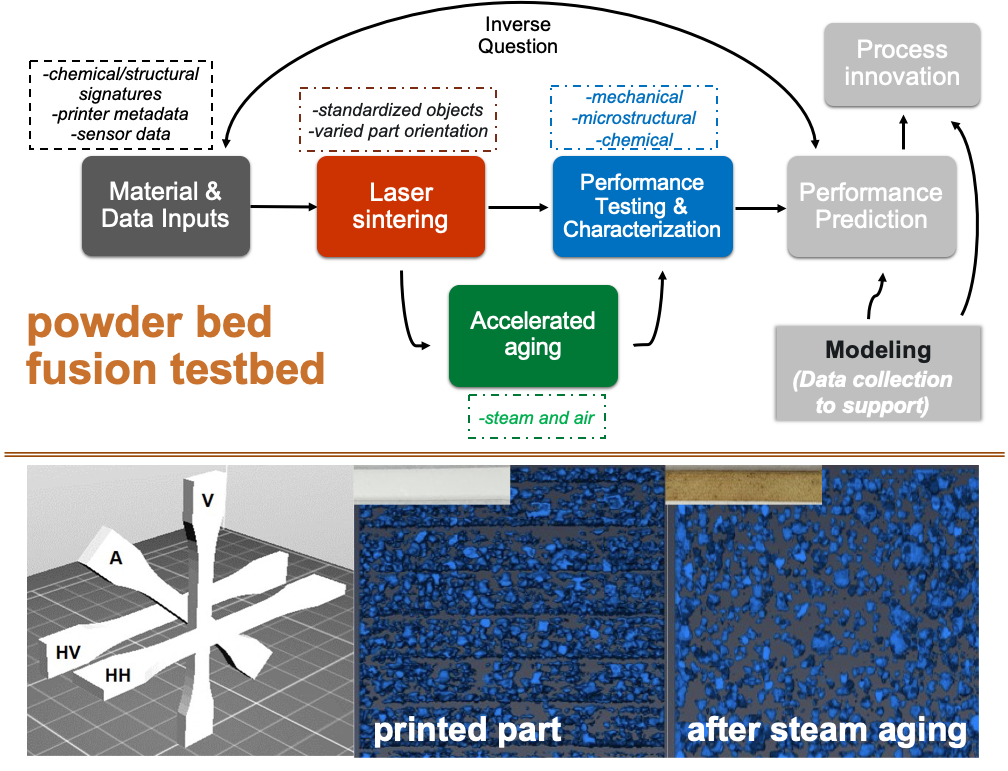CDI Feedstock-Structure-Property Relationships in the Additive Manufacturing of High-Performance Thermoplastics
Return to Additive Manufacturing Use Case
PI: Zack Kennedy
Project Team: Josef Christ, Michelle Fenn, Tamas Varga, Anil Battu, Wenbin Kuang, Anne Arnold, W. Steven Rosenthal, Scott Muller, Chris Barrett, Timothy Pope, Mathew Thomas
Project Term: December 2019 to September 2021
Key Science Aims:
- Establish polymer-focused additive manufacturing (AM) of high-performance materials using low-cost machines
- Correlate material, and process signatures characteristic of laser sintering and material extrusion AM processes for provenance, increased fundamental understanding, and quality assurance purposes
- Molecular dynamics modeling for polymer property prediction and method development in the calculation of polymer lifetimes through thermal analysis

Project Description: The purpose of this primarily experimental project is to develop polymer-focused AM testbeds for identifying and understanding the origin of build and material-specific signatures unique to AM technologies. This work further aims to define the structural and performance evolution that occurs when printed parts are subjected to real-world environments and post-processing treatments.
Polymer-based AM production methods have evolved from merely rapid prototyping technologies into more widely used manufacturing tools. High-performance feedstocks are now more readily available and processable on lower-cost instruments. Fundamentally, the structures and compositions of AM produced parts differ from that of their traditionally produced counterparts. Understanding these differences may lead to greater performance prediction and the design of new materials to generate AM parts with improved functionality.
Example areas of emphasis for the project team include:
- Creating testbeds for systematic printing and analysis of laser-sintered and material extrusion parts.
- Conducting targeted structural and spectroscopic analysis campaigns involving an array of complementary techniques. For example, coupling X-ray computed tomography analysis with dynamic mechanical analysis and tensile testing.
- Providing data and parts to other Chemical Dynamics Initiative projects developing sintering models for predicting microstructure and those developing a new methodology for non-destructive evaluation.
The research team is leveraging high-performance computing infrastructure to accelerate analysis, specifically collaborating with the Chemical Dynamics Initiative integration team and through the use of Distributed Infrastructure with Remote Agent Control (DIRAC).
Increasing fundamental understanding on the crystallization dynamics of semi-crystalline thermoplastics and their composites as it relates to the initial AM build process and then the effects on in-service performance.